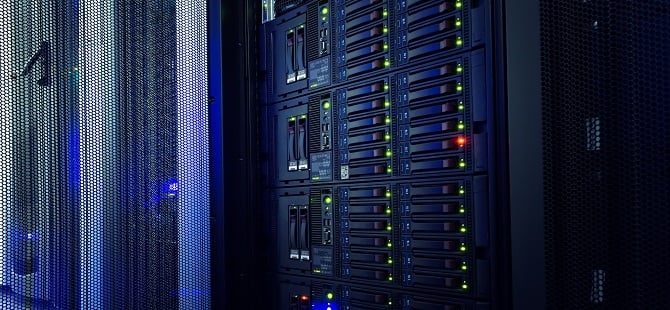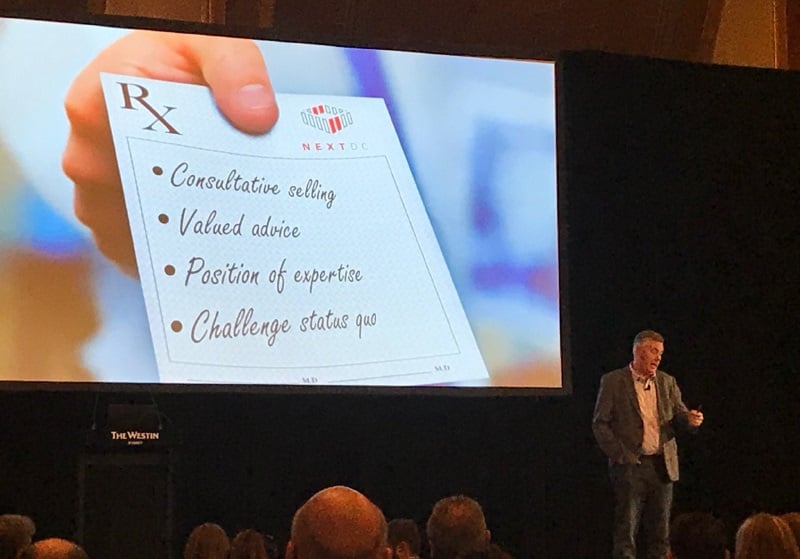It has been a tumultuous couple of years for everyone. So much change is required to achieve future readiness and to counter global realities reshaping almost every aspect of business and operations.
Addressing new threats and capitalising on new opportunities isn’t something that’s achieved in one fell swoop. For most organisations it means starting small to address the needs of now, whilst keeping your eyes on the bigger vision of where you want to be in two, five and 10 years’ time.
Hybrid IT is the de facto standard for every organisation. Today, the true value hybrid architectures introduce are the ability to enable the broader strategy to drive cost efficiencies, productivity improvements and a free run to stay focused on innovation and growth.
For services providers and customers alike – colocation facilities represent a far easier option to execute strategy that delivers the efficiency, performance, TCO benefits and security demanded by organisations. Putting capital requirements aside, the skills shortage and resource constraints alone mean it’s no longer feasible to achieve best practice from self-managed, on-premises data centres.
An organisation’s data, and the infrastructure underpinning it, is mission-critical to achieving innovation and growth agendas through Hybrid IT. You don’t have to achieve all growth and migration at once, equally it’s impossible to know what your requirements will look like in future. Therefore, it makes sense to park your most valuable assets in a purpose-built location, where it’s easy to scale on-demand, without capital expenditure overheads, lengthy lead times and commercial agreements or resource constraints
Not all data centres are created equal
There are many good reasons why premium colocation facilities present advantage for growing partners and customers over on-premises environments. Here are some of the top considerations to weigh up;
-
How much power will you use in the future – Next generation high-density servers are heavier and draw significantly more power. Are your environments designed from scratch to cope with tomorrow’s power requirements as data volumes grow and applications need to work harder?
-
Achieving guaranteed minimum service levels – Data centres of the future should not only be demonstrating innovation and dedication to achieving 100% uptime. They should have enough faith in the design, engineering, and operational excellence of their facilities to guarantee uninterrupted availability. 99.999% uptime allows for ~5.3 minutes of downtime a year. However, as many have experienced, even a one second outage can result in hours or days of downtime. Can you afford any data centre outage?
-
Has your data centre been independently assessed and certified? – Your data centre’s role should be coveted as the foundation stone of organisational success and proactively managed to eliminate any single point of failure. Impartial verification of security, safety, resilience and sustainability are increasingly critical customer requirements. Uptime Institute is the only globally recognised independent organisation assessing and certifying facilities to the highest standards. How well are your data centres audited? Settle for nothing less than Tier IV status.
-
Sovereignty and sustainability –The Commonwealth is moving quickly to ensure that Australia’s sovereign data remains onshore while customers, partners, investors and regulators are quickly targeting carbon accountability. These are both serious considerations for hosting strategy. Governments at federal, state and local levels will no longer allow for data to be stored anywhere other than certified sovereign facilities while a reckoning is underway across enterprise and government to improve sustainability initiatives and credentials. Energy efficient data centres hosting sovereign ecosystems and offering the opportunity to offset the carbon footprint of bulging digital infrastructure requirements are the future. Do not let your Hybrid IT architecture and data centre locations impede the ability to compete for government business and support customers’ objective to achieve net zero carbon targets.
-
How good is your security? – Security threats are real highlighted by their ever-evolving sophistication, diversity and frequency. Minimising the potential damage from malicious and accidental security breaches starts with physical protection of the buildings that house critical infrastructure. Breaches cost money, reputation and time not to mention distracting you from what’s important. That defence-in-depth needs to be cutting edge, proactive and visible 24/7/365. Can you be sure that your own, or your chosen facilities can meet the highest security standards and certifications while providing integrated systems without hindering ease of access? This is detail you must attend to.
-
Supporting systems –When it comes to infrastructure health, you want real-time visibility and insight into what is happening in the environment. Similarly, efficient physical access to racks should be administered from the palm of your hand. You should be empowered to manage infrastructure and access the services needed at anytime from anywhere. Key operated rack-locking is a redundant process that belongs in the dark ages. You should be able to grant access to racks electronically and remotely enabling enormous productivity gains and cost reduction of contractor time on site.
Your digital infrastructure is everything today and will be more so tomorrow. Just like a Maserati needs a safe haven to park, so too does the strategic Hybrid IT infrastructure that champions your digital native capability while empowering your ability to scale with agility and flexibility.
Reach out to NEXTDC to better understand how our infrastructure solutions give you the assurance and freedom you need to chase your big vision for the future.


